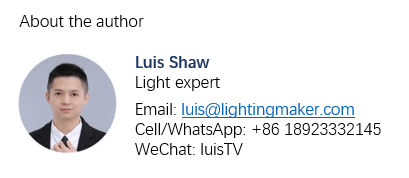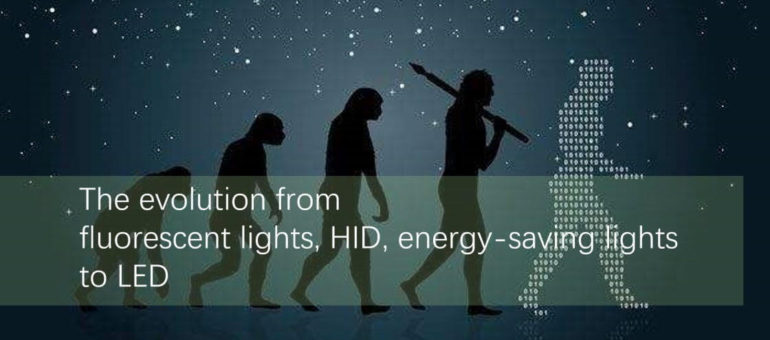The past and present of the light source
From the traditional light source to the LED, how many times have you experienced the changes and upgrades of the light source? This article will introduce the efficacy of the traditional light source, the efficacy, advantages, and disadvantages of the LED light source.
1.The light efficiency of traditional light sources
First of all, one light input is “power (watt)”, the output is “light flux (lumen)”, the light efficacy = lumen/watt

The earliest incandescent lamps used carbon wire, and now the incandescent lamp is already tungsten wire. Since the incandescent lamp heats the tungsten wire and emits light, its illumination is a by-product, and the heat is the main product, so its luminous efficacy is extremely low. Incandescent lamps are very cheap, its light efficiency is 7-15 lm/W, and lifetime is 1000h, so now we know that 7-15 lm/W is the efficacy of incandescent lamps.

In order to improve the light efficiency of incandescent lamps and extend their life, we have developed tungsten halogen lamps. Tungsten halogen lamps have various wattage and voltages. It’s light efficiency will be higher than that of incandescent lamps, the luminous efficiency is 15-25 lm/W, the color rendering is the same as incandescent lamps, and its lifetime is much higher than that of incandescent lamps.
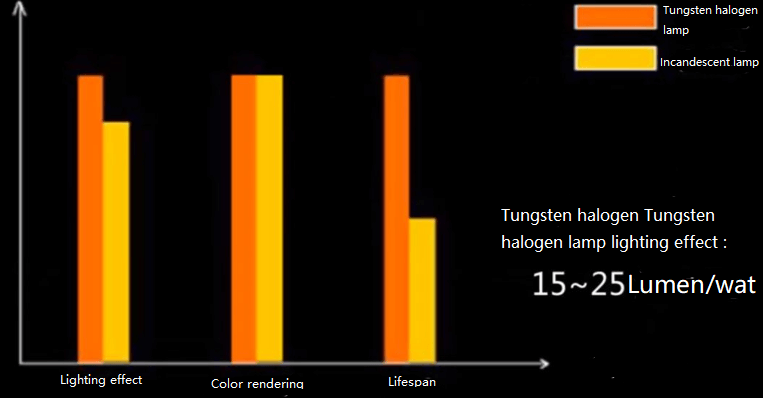
There is also a fluorescent lamp, which is no longer heated by the tungsten wire. It emits electrons to the mercury atoms by the electrodes, then emits ultraviolet rays, and finally excites the phosphor to emit visible light. This principle of illumination determines that it does not generate too much heat, and more energy is converted into light, so it’s light efficiency is much higher than that of incandescent lamps with heat radiation.
Fluorescent lamps generally have a luminous efficacy of 80 lm/W or more, and particularly high one can reach 110 lm/W or more. However, not all fluorescent lamps are so high, but their luminous efficacy is 5-8 times higher than that of incandescent lamps.
Fluorescent lamps need a matching ballast to work properly, and the ballast also has a certain power. When we calculate the luminous efficacy of a fluorescent lamp, the power divided by the luminous flux is the total power of the lamp plus the ballast.
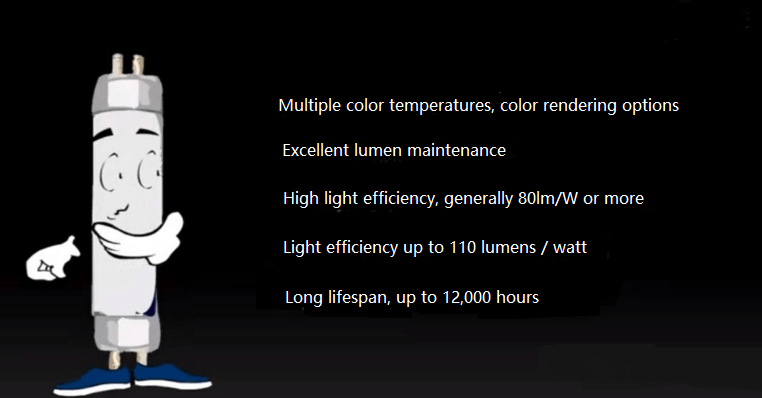
Another type of lamp is an energy-saving lamp, which is actually a fluorescent lamp, but it is a compact fluorescent lamp. Since the ballast of the energy-saving lamp is integrated into the lamp body and has a very small volume, it sacrifices some efficiency. Its luminous efficiency is not as high as that of a straight tube, but the light efficiency is generally higher than 60 lm/W, which is comparable to incandescent. The lamp is much taller and has a lifespan five times that of an incandescent lamp.
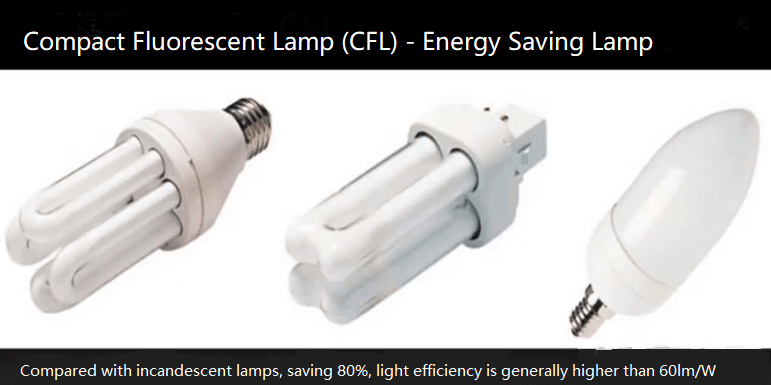
Infinite electrode lamp popular in previous years, that is a fluorescent lamp as well as a compact fluorescent lamp. It’s light efficiency is 60-90lm/W, which is the same as the fluorescent lamp.
A high-intensity discharge lamp (HID), which is a gas discharge luminescence like a fluorescent lamp, except that the fluorescent lamp is a low-intensity gas discharge. Its principle of illumination is the same as that of lightning. It is equivalent to say that it is experiencing a strong discharge in a small electric tungsten tube, so it is called a high-intensity gas discharge lamp.
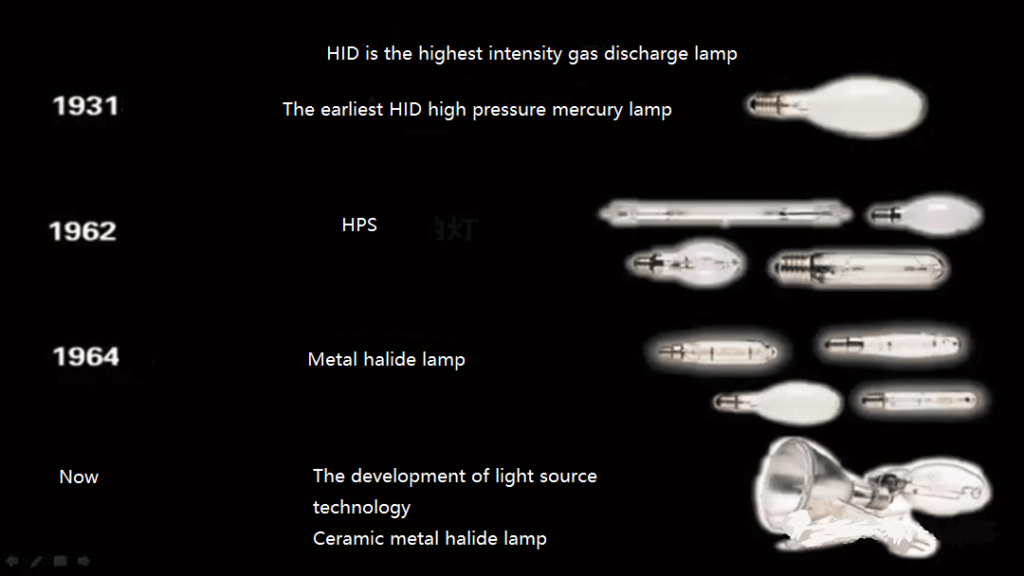
The metal halide lamp is a strong discharge between the two electrodes and then excites the various metals inside to emit light. It also requires a trigger and a ballast. Since the metal halide lamp is also a gas discharge light, it’s light efficiency is also very high, reaching 70-110 lm/W.
Let’s use a picture to summarize the light effects of various traditional light sources.

2. LED light source efficacy
The principle of illumination of an LED light source is that blue photons and yellow photons are mixed together to produce a light source.

Incandescent lamps are first heated and then illuminate, with a large amount of infrared light; most of the LED light source is converted into light, but there is still a lot of heat, which means that the efficiency of LED lighting is much improved because there is no waste of heat and infrared rays.

The light effect of the LED light source is different from that of the traditional light source. It also has a feature that the traditional light source only needs to be illuminated, its luminous efficiency is basically fixed; while the LED at very small current, its performance is very high. When the current reaches the conduction, its luminous flux is very impressive. At this time, the luminous efficiency is more than 200, but it is not practical because the luminous flux is too small.
3. Advantages and disadvantages of LED
01 /
advantage
A, high light efficiency
As mentioned above, the principle of illumination is mentioned. Due to the principle of LED illumination, it’s light source performance is very high. The light source performance of LED is above 80lm/W. With the improvement of technology, it’s light source performance is still rising.
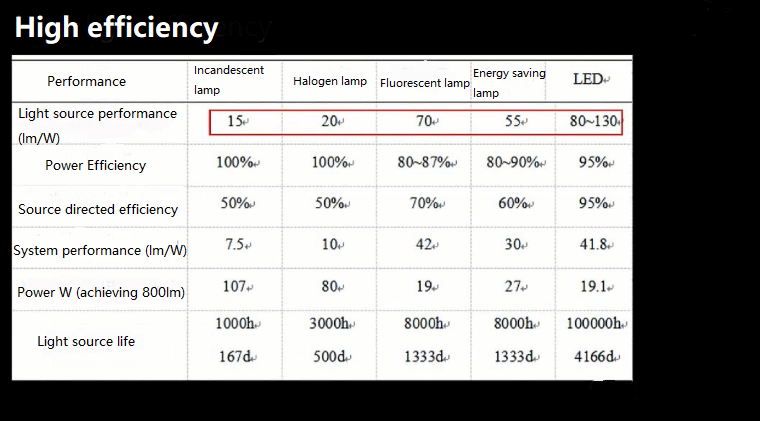
B, directionality
In addition to its own light, the LED has a characteristic that it is oriented and its orientation efficiency is high.
Let’s look at an image:

For example, the first line is an energy-saving lamp. Its light is emitted everywhere. Even if you put it in a fixture, it will have a part by reflection, but there will be lost when it is reflected, and some will be inside. So the final system efficiency is not very high, only 54%. If the energy-saving lamp is 65 lm/W, multiplied by 54%, then the system’s performance is only 35 lm/W.
The LED in the second row uses the early LED of only 58 lm/W, but since his light is in one direction when he is installed in a fixture, his light will be more. Therefore, his system efficiency will be 77%, so that his system luminous efficiency is 44%, which is higher than the energy-saving lamps,. Which is a characteristic of LED, it is one-way illumination.
C, long lifetime
Another characteristic of LEDs is that they have a long life. The incandescent lamp is 1000h, and the LED can theoretically reach 100,000h, more than 4,000 days, and there is no need to change it for ten years. The premise is that this LED light should be designed well so that it can work in a better state, therefore achieve such a theoretical value.

D, small size
Another characteristic of LEDs is that they are small in size, and each unit of LED is a 3-5 mm square. This kind of small piece can be made into various shapes, stuffed into various lamps. Can be stuffed in the furniture or the light trough, and can be stuffed like a soft light bar.
The small size makes it easier to apply LED in a variety of applications
E, more color
As we all know, the color of the light emitted by different semiconductors is different. It can emit red light, emit blue light, and can also produce high color temperature, or low color temperature. So this only needs to match the LEDs of different colors, you can mix out various colors, use the principle of three primary colors and three colors with 256 levels of gray and mix them arbitrarily, which can produce 16777216 colors. This is also a very important feature of LEDs.
F, easy to control
The LED acts as a dynamic light source that is easy to control, and you can mount it on the building and let it change by the program.
G, fast response
The LED response is particularly fast. Even if the incandescent lamp is bright when turn on, its response speed will not be bright after 0.2 seconds; the response speed of the LED will be bright at 0.00000001 seconds. So you can use it to make a display, which is actually a lot of LED points, using signals to control it.
H, low fault
The essence of LEDs is a semiconductor component that has no sensitive components such as vacuums and high-voltage trigger circuits. It has a very low failure rate and is maintenance-free.
I, green environmental protection
The LED light does not have an extra spectrum of infrared rays, ultraviolet rays, etc., and there are little heat and radiation, which has little effect on the object to be illuminated. The components inside are metals, semiconductors, glass, and copper, all of which are non-toxic and harmless, and waste can be recycled.
02 /
Disadvantage
A, heat problem
During the illuminating process of the LED, part of the energy becomes heat loss, which causes the PE junction temperature to rise, accelerates the aging of the chip and the encapsulation resin, and directly affects the service life and luminescence performance of the LED.
B, light color problem
The principle of LED illumination causes the spectrum to be a narrow spectrum, and some spectra are missing, so it’s color rendering is not easy to be high, and there is more blue light in the LED light. Under the illumination of this light, the human visual perception It is uncomfortable.
C, brightness problem
As mentioned above, the size of the LED is small, and one of its luminous performance is very high, so it is a light source with high optical density, such light is very easy to produce glare, so it is necessary to use various methods to control its glare
4. Common types of LED lamp bead sources
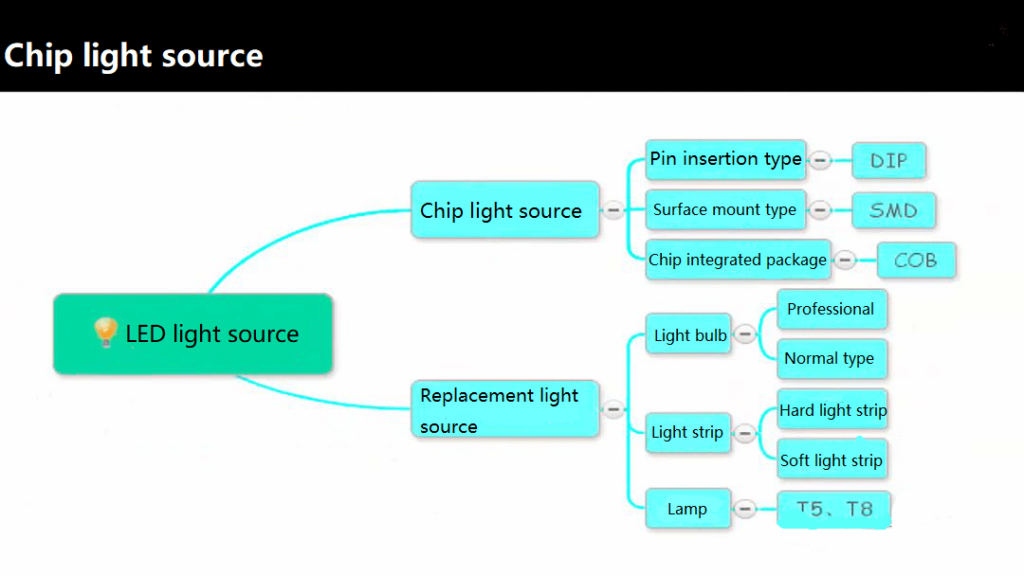
Chip light source
01/Pin-in(DIP)
There’s an LED chip in the middle, a launching bowl underneath, a cathode and anode rod on the frame, and a lower lead frame inserted on the circuit board. The outer epoxy package is called a pin plug-in type (DIP).

A, Common shapeDIP has many types of shapes, round, oval, square and shaped.
B, Type of illuminationMonochromatic, two-color, and multi-color.
C, Common modelφ3mm、φ5mm、φ8mm、φ10mm…
D, Application field This type of beads is almost unused in the lighting field, and more are used in lights, indicators, displays, miniature flashlights, etc.
02/Low power surface mount(SMD)

A, Common model There are models of low power surface mount and there’s no special specification. We have used it and finally found that there are many people who use more, so it becomes the standard.

B, Application fieldThere are many applications for low-power surface mounts. Because of its small size and the ability to use it anywhere, it is suitable for all fields. Like bulbs, flat lights, downlights, tubes, PAR lights, light strips, ultra-thin light boxes, etc.
03/High power surface mount(SMD)
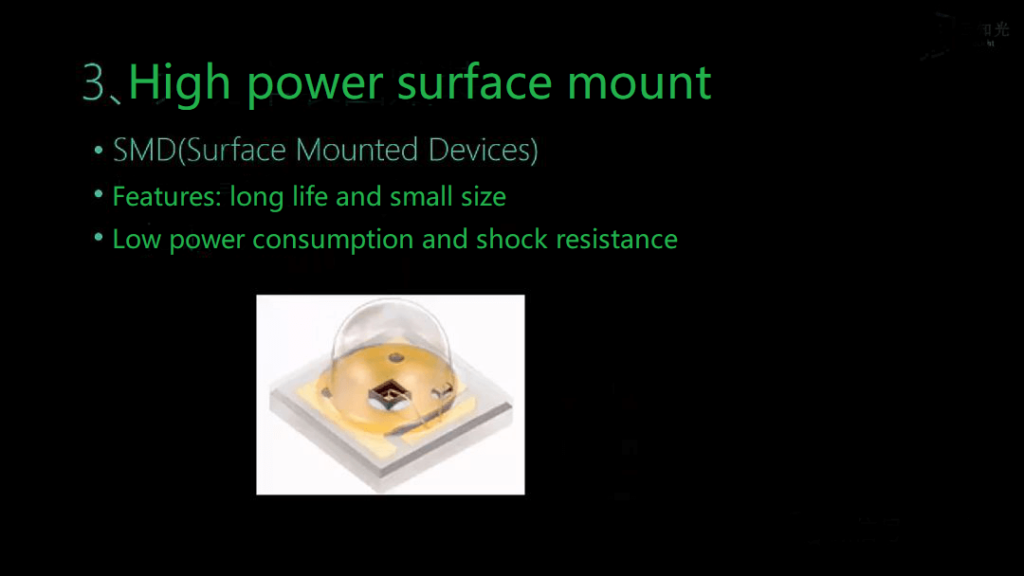
A, Application fieldThis kind of lamp bead usually uses with a lens. It can be used as spotlights, floodlights and in many places.
04/Integrated package COB

A, Common shapeCOB has round, long and square shapes.
B, Common modelSOLERIQ ® S9、SOLERIQ ® S13、XUAN1313、XUAN1919.
C, Application fieldReplace bulbs, indoor lighting, outdoor lighting, and more.
05/CSP(Chip Scale Package)
CSP is the latest technology, which means that the size of the package is about the same size as the chip.
5 Replacement class light source
01/Bulb
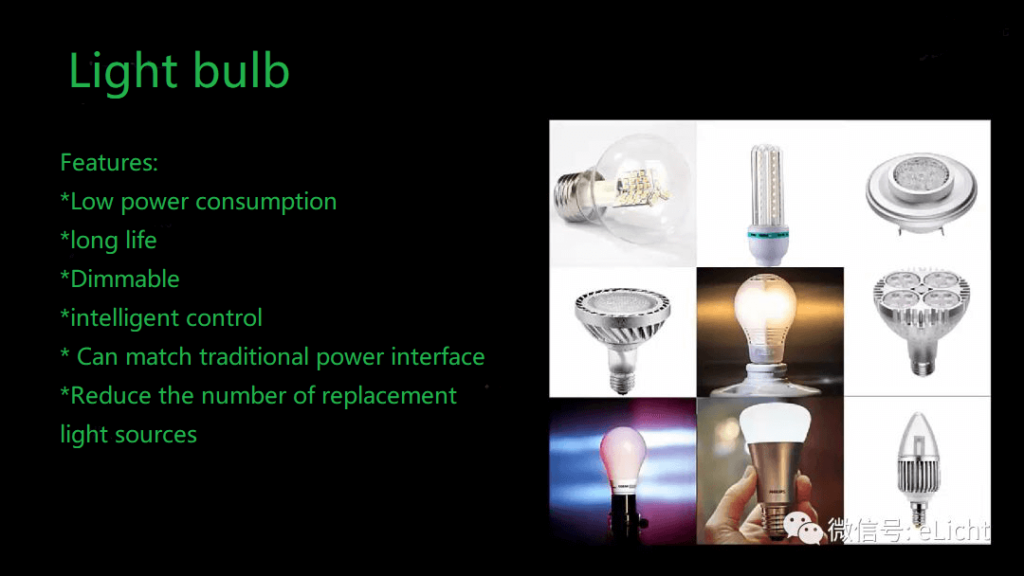
A, Common types There are many types of bulbs, such as bulbs, bubbles, etc., and shapes like energy-saving tubes, and then put the LED beads inside.
B, Application fieldReplaceable light source: halogen lamp, incandescent lamp, energy-saving lamp, can also be used for professional lamps such as chandeliers, decorative lamps, down lights and spotlights.
C, Common model E27、G5.3、GU10, etc.
02/Light strip
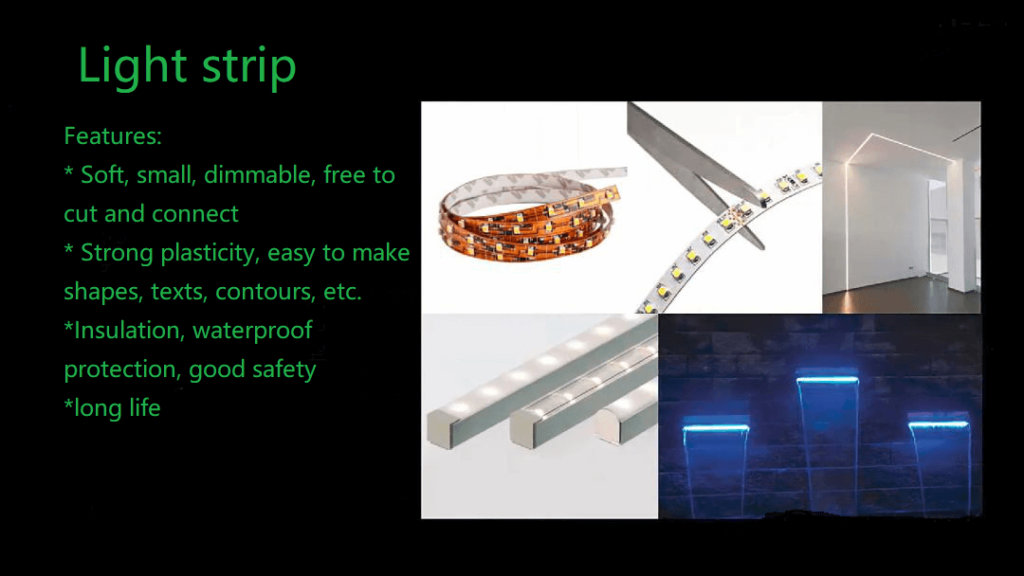
A, Common model
a.5050light strip, available for the environments that require RGB dimming.
b.3528light strip, available for low light slots.
c.3014light strip, available for the places where a certain lighting effect is required.
B, Application field Replace traditional T5 brackets, troffer lights , wall lights and used as decorative auxiliary lighting.
03 /Lamp

A, Common model T5, T8 and other series
B, Application fieldReplace traditional fluorescent lamps, troffer lights, for general lighting (such as office buildings, shopping malls, restaurants, schools, homes, etc.)
